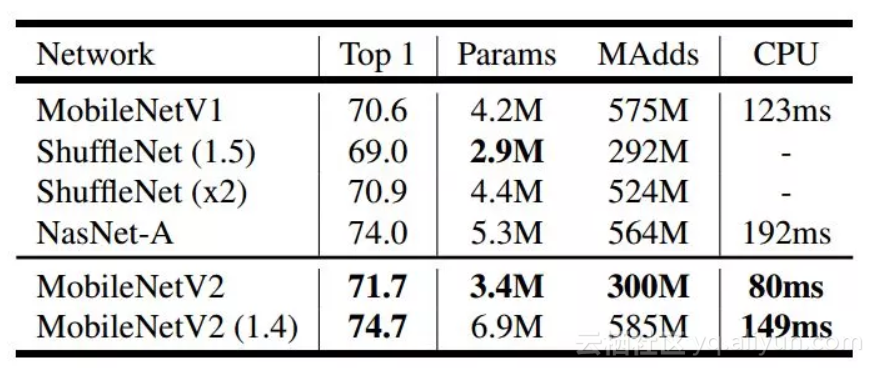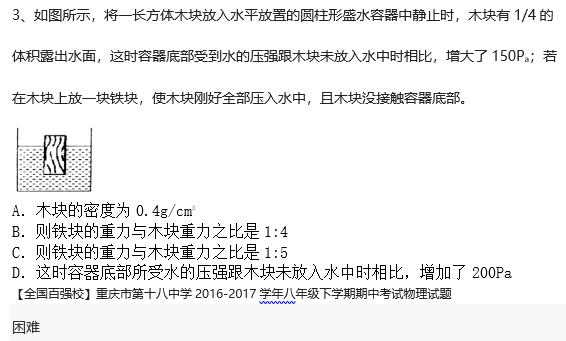原文出自本人博客:
vuex的详细总结
博主博客--兼乎
说在前面
最近在使用vuex做项目,所以有了总结vuex的念头。于是在本天中午到晚上9点,我一直没有停过,为了能尽快将vuex的重点写出来。虽然本vuex文档还不够完整但暂时够用,最大缺点是没有写实战,只是总结了每个知识的的要点。回想一下,时间过得很多,new Boy() 之后时间更加紧迫,有时候分心乏术。到现在,使用vue也有一段时间了。老是想总结点有关vue的却老是在写一些vue相关的demo,从而没有了总结的时间。今天总结下定决定写点vue相关的,一方面巩固基数,一方面分享总结,同时本编偏理论和一些细节,后面一部分因为官方文档也挺实用的就直接摘抄Vuex官方文档。
另外贴上一段戳心的鸡汤,请喝:
我们的敌人不是我们身外的黑暗,而是自己内心的黑暗,那就是我们的容易失望,我们的沮丧,我们的缺乏信心,耐心和细心,我们缺乏坚韧,轻言放弃,乃至自暴自弃。
不懂的要上官网看文档,不懂的看一次两次直到弄懂为止。
开讲
1.vue
vue是一个前端javascript写的渐进式框架,在组件化模块的时候主要无非是渲染数据、增强交互效果、拓展业务逻辑组件、组件分离要高内聚低耦合、分配管理路由,在这之后就是一个挂在在浏览器端的全局js模块。当然这是我的片面之词,详情请移步vue。
2.Vuex
可以这么通俗理解:vuex是一个挂载到vue的全局变量对象(store),而且store的 属性(state) 的 改变 只 能通过提交mutation来改变,使用Getter来映射store对象状态。另外 提交 同步事务 使用 mutation 的 commit, 分发 异步事务 使用 action 的 dispatch。同时使用 module 来方便管理 vuex模块 和 状态
Vuex官方文档:https://vuex.vuejs.org/zh-cn/intro.html
前方高能
是什么?
概念:
状态管理模式,核心是一个store(仓库),包含 共享的 单一状态(state)树
为什么?
特点:
1、一个 全局单例 模式管理,方便集中管理所有组件状态
2、状态管理 是 响应式 的,且高效
3、改变状态(state)的 唯一途径 是 显示提交commit(mutation)
4、mutation->动作
怎么样?
状态相应机制:
使用技巧:
1、因为状态储存是响应式,所以 读取状态的方法 最简单的方法是使用 计算属性(computed),但建议使用辅助函数获取状态
2、Action 类似于 mutation,不同在于:
Action 提交的是 mutation,而不是直接变更状态。
(
同步情况:Action -> 提交 mutation ; Mutation -> 提交 commit
异步情况:Action -> 使用dispatch出发异步
)
Action 可以包含任意异步操作,而mutation 是同步事务。
(Action -> 异步 ; Mutation -> 同步)
3、使用action分发异步事务时:
一个 store.dispatch 在不同模块中可以触发多个 action 函数。
在这种情况下,只有当所有触发函数完成后,返回的 Promise 才会执行。
核心概念
1、state:单一状态树,可以认为是 store 的 状态变量(data)
使用辅助函数:
获取状态:mapState
当映射的计算属性的名称与 state 的子节点名称相同时,使用数组传入
如:mapState([
'count'
])
不然 传 对象
如:mapState({
count: state => state.count,
countAlias: 'count' //这里 'count' 等价于上述 state => state.count
})
对象展开运算符(…):
使用对象展开运算符将此对象 混入 到 外部对象 中
…mapState({ })
2、Getter:可以认为是 store 的计算属性(computed)
接受参数
参数可以有state和getter本身
如:const store = new Vuex.store({
state: {
todos: [
{id: 1, text: 'id1', done: true},
{id: 2, text: 'id2', done: false}
]
},
getters: {
doneTodos: state => {
//这里过来state中todos的done为true的对象,并暴露为store.getters对象
//store.getters.doneTodos // -> [{ id: 1, text: '...', done: true }]
return state.todos.filter( todo => todo.done)
},
todoCount: (state, getter) => {
return getters.doneTodos.length // -> 1
}
}
})
使用辅助函数:
仅仅是将 store 中的 getter 映射 到 局部 计算属性:mapGetters
例子:看上文
对象展开运算符(…):
使用对象展开运算符将 getter 混入 computed 对象中
如:computed: {
...mapGetters([
'doneTodosCount',
'anotherGetter',
// ...
])
}
3、Mutation ( 同步 事务 ):改变store状态的 唯一方式。
类似于事件(Event):每个 mutation 都有一个 字符串 的 事件类型 (type)
和 一个 回调函数 (handler,改变状态的地方)接受参数
参数可以有多个。第一参数为state,
及其他对象或属性(支持提交负荷Payload)
如:const store = new Vuex.Store({
state: {
count: 1
},
mutations: {
increment (state, n) {
state.count += n
}
}
})
触发事件:提交一次commit
store.commit('increment', 10)
在组件中提交 Mutation
两种方法:
1.使用 this.$store.commit('xxx') (支持载荷PayLoad)
2.使用 mapMutations 辅助函数 (支持载荷PayLoad)
将组件中的 methods 映射为 store.commit 调用(需要在根节点注入 store)
如:
// xxx.vue组件
import { mapMutations } from 'vuex'
export default {
// ...
methods: {
...mapMutations([
'increment',
// 将 `this.increment()` 映射为 `this.$store.commit('increment')`
'incrementBy'
// 将 `this.incrementBy(amount)` 映射为 `this.$store.commit('incrementBy', amount)`
]),
...mapMutations({
add: 'increment'
// 将 `this.add()` 映射为 `this.$store.commit('increment')`
})
}
}
Mutation 需遵守 Vue 的响应规则
使用 常量 替代 Mutation 事件类型( 推荐 )
这是一种规范,而且这样既能使用 eslint 的检测工具,也能让开发者一目了然
如:
//mutation-types.js
export default {
const SOME_MUTATION = ' SOME_MUTATION '
}
//store.js
import Vuex from 'vuex'
import * as types from 'mutation-types'
const store = Vuex.store({
state: { … },
mutations: {
[ SOME_MUTATION ]( state ) => {
…
}
}
})
Mutation 必须是同步函数( 重点 )
为了实现state实时跟踪,使用同步函数,也为了调试方便
4、Action ( 异步 事务 ):用法类似于mutation,不同在于可以提交 异步事务(使用dispatch 时 提交异步),
而且 是 提交 mutation 上的事件接受参数
参数可以有多个。第一参数为接受一个与 store 实例具有相同方法和属性的 context 对象(因此你可以调用 context.commit 提交一个 mutation,或者通过 context.state 和 context.getters 来获取 state 和 getter),
及其他对象或属性(支持提交负荷Payload)
如:
const store = new Vuex.Store({
state: {
count: 0
},
mutations: {
increment (state, n) {
state.count += n
}
},
actions: {
incrementAsyn(context, n) {
context.commit( 'increment', n )
}
}
//或者使用参数结构
//actions: {
// increment( { commit } ) {
// commit( 'increment', n )
// }
// }
})
分发Action
因为Action提交的commit实际是提交mutation,而mutation的提交必须是同步的,
要向提交异步的action必须使用dispatch
如:
const store = new Vuex.Store({
state: {
count: 0
},
mutations: {
increment (state, amount) {
state.count += amount
}
},
actions: {
incrementAsyn( { commit } ) {
setTimeout( () => {
commit( 'increment' )
}, 1000)
}
}
});
// 以载荷形式分发
store.dispatch( 'incrementAsyn', {
amount: 10
} )
// 以对象形式分发
store.dispatch( {
type: 'incrementAsyn',
amount: 10
} )
例子2:
来看一个更加实际的购物车示例,涉及到调用异步 API 和分发多重 mutation:
actions: {
checkout ({ commit, state }, products) {
// 把当前购物车的物品备份起来
const savedCartItems = [...state.cart.added]
// 发出结账请求,然后乐观地清空购物车
commit(types.CHECKOUT_REQUEST)
// 购物 API 接受一个成功回调和一个失败回调
shop.buyProducts(
products,
// 成功操作
() => commit(types.CHECKOUT_SUCCESS),
// 失败操作
() => commit(types.CHECKOUT_FAILURE, savedCartItems)
)
}
}
在组件中 分发 Action
两种方法:
1.使用 this.$store.dispatch('xxx') (支持载荷PayLoad)
2.使用 mapActions 辅助函数 (支持载荷PayLoad)
将组件中的 methods 映射为 store.commit 调用(需要在根节点注入 store)
如:
// xxx.vue组件
import { mapActions } from 'vuex'
export default {
// ...
methods: {
...mapActions([
'increment',
// 将 `this.increment()` 映射为 `this.$store.dispatch('increment')`
'incrementBy'
// 将 `this.incrementBy(amount)` 映射为 `this.$store.dispatch('incrementBy', amount)`
]),
...mapActions({
add: 'increment'
// 将 `this.add()` 映射为 `this.$store.dispatch('increment')`
})
}
}
组合Action
那么既然使用actions来 异步 分发改变状态,
因此也要使用到 Promise ,
和 asyn/await 的新知识的
使用 Promise
actions: {
actionA( {commit} ){
return new Promise( (resolve, reject) => {
setTimeout( () => {
commit('someMutation')
resolve()
}, 1000)
})
},
actionB( {dispatch, commit} ){
return dispatch('actionA).then( () => {
commit('someOtherMutation')
})
}
},
// xxx.vue组件
methods: {
this.$store.dispatch('actionA').then(() => {
…
})
}
使用 asyn/await
//假设 getData() 和 getOtherData() 返回的是 Promise
actions: {
async actionA ( {commit} ) {
commit('gotData', await getData())
},
async actionB ( {commit} ) {
await dispatch('actionA')
//等待actionA完成
commit('gotOtherData', await getOtherData())
}
}
注意:
一个 store.dispatch 在不同模块中可以触发多个 action 函数。
在这种情况下,只有当所有触发函数完成后,返回的 Promise 才会执行。
5.Module
由于使用单一状态树,应用的所有状态会集中到一个比较大的对象。当应用变得非常复杂时,store 对象就有可能变得相当臃肿。
为了解决以上问题,Vuex 允许我们将 store 分割成模块(module)。每个模块拥有自己的 state、mutation、action、getter、甚至是嵌套子模块——从上至下进行同样方式的分割:
const moduleA = {
state: { ... },
mutations: { ... },
actions: { ... },
getters: { ... }
}
const moduleB = {
state: { ... },
mutations: { ... },
actions: { ... }
}
const store = new Vuex.Store({
modules: {
a: moduleA,
b: moduleB
}
})
store.state.a // -> moduleA 的状态
store.state.b // -> moduleB 的状态
模块的局部状态
对于模块内部的 mutation 和 getter,接收的第一个参数是模块的局部状态对象。
如:
const moduleA = {
state: { count: 0 },
mutations: {
increment (state) {
// 这里的 `state` 对象是模块的局部状态
state.count++
}
},
getters: {
doubleCount (state) {
return state.count * 2
}
}
}
同样,对于模块内部的 action,局部状态通过 context.state 暴露出来,
根节点状态则为 context.rootState:
如:
const moduleA = {
// ...
actions: {
incrementIfOddOnRootSum ({ state, commit, rootState }) {
if ((state.count + rootState.count) % 2 === 1) {
commit('increment')
}
}
}
}
对于模块内部的 getter,根节点状态会作为第三个参数暴露出来:
如:
const moduleA = {
// ...
getters: {
sumWithRootCount (state, getters, rootState) {
return state.count + rootState.count
}
}
}
命名空间
默认情况下,module中的{ state, actions, getters } 注册 在 全局变量上,
使得多个模块能够对同一 mutation 或 action 作出响应。
如果希望 模块具有更高的封装度和复用性,可以通过 添加 namespaced: true 的方式使其成为命名空间模块。
当模块被注册后,它的所有 getter、action 及 mutation 都会自动根据模块注册的路径调整命名。例如:
如:
const store = new Vuex.Store({
modules: {
account: {
namespaced: true,
// 模块内容(module assets)
state: { ... }, // 模块内的状态已经是嵌套的了,使用 `namespaced` 属性不会对其产生影响
getters: {
isAdmin () { ... } // -> getters['account/isAdmin']
},
actions: {
login () { ... } // -> dispatch('account/login')
},
mutations: {
login () { ... } // -> commit('account/login')
},
// 嵌套模块
modules: {
// 继承父模块的命名空间
myPage: {
state: { ... },
getters: {
profile () { ... } // -> getters['account/profile']
}
},
// 进一步嵌套命名空间
posts: {
namespaced: true,
state: { ... },
getters: {
popular () { ... } // -> getters['account/posts/popular']
}
}
}
}
}
})
启用了命名空间的 getter 和 action 会收到局部化的 getter,dispatch 和 commit。换言之,你在使用模块内容(module assets)时不需要在同一模块内额外添加空间名前缀。更改 namespaced 属性后不需要修改模块内的代码。
在命名空间模块内访问全局内容(Global Assets)
如果希望 使用全局 state 和 getter,rootState 和 rootGetter 会作为第三和第四参数传入 getter,也会通过 context 对象的属性传入 action。
{
命名模块(module)内 使用 全局 state 和 getter
在命名模块(module)的getterr 传入 rootState 和 rootGetter
}
若需要在全局命名空间内分发 action 或提交 mutation,将 { root: true } 作为第三参数传给 dispatch 或 commit 即可。
{
全局命名空间 内 分发 action 或 提交 mutation
则在 action 或 mutation 内
dispatch('someOtherAction', null, { root: true }) // -> 'someOtherAction'
dispatch('someOtherAction', null, { root: true }) // -> 'someOtherAction'
}
如:
modules: {
foo: {
namespaced: true,
getters: {
// 在这个模块的 getter 中,`getters` 被局部化了
// 你可以使用 getter 的第四个参数来调用 `rootGetters`
someGetter (state, getters, rootState, rootGetters) {
getters.someOtherGetter // -> 'foo/someOtherGetter'
rootGetters.someOtherGetter // -> 'someOtherGetter'
},
someOtherGetter: state => { ... }
},
actions: {
// 在这个模块中, dispatch 和 commit 也被局部化了
// 他们可以接受 `root` 属性以访问根 dispatch 或 commit
someAction ({ dispatch, commit, getters, rootGetters }) {
getters.someGetter // -> 'foo/someGetter'
rootGetters.someGetter // -> 'someGetter'
dispatch('someOtherAction') // -> 'foo/someOtherAction'
dispatch('someOtherAction', null, { root: true }) // -> 'someOtherAction'
commit('someMutation') // -> 'foo/someMutation'
commit('someMutation', null, { root: true }) // -> 'someMutation'
},
someOtherAction (ctx, payload) { ... }
}
}
}
带命名空间的绑定函数
当使用 mapState, mapGetters, mapActions 和 mapMutations 这些函数来绑定命名空间模块时,写起来可能比较繁琐:
如:
computed: {
...mapState({
a: state => state.some.nested.module.a,
b: state => state.some.nested.module.b
})
},
methods: {
...mapActions([
'some/nested/module/foo',
'some/nested/module/bar'
])
}
解决方法:
1、对于这种情况,可以将模块的空间名称字符串作为第一个参数传递给上述函数,这样所有绑定都会自动将该模块作为上下文。于是上面的例子可以简化为:
computed: {
...mapState('some/nested/module', {
a: state => state.a,
b: state => state.b
})
},
methods: {
...mapActions('some/nested/module', [
'foo',
'bar'
])
}
2、通过使用 createNamespacedHelpers 创建基于某个命名空间辅助函数。它返回一个对象,对象里有新的绑定在给定命名空间值上的组件绑定辅助函数:
import { createNamespacedHelpers } from 'vuex'
const { mapState, mapActions } = createNamespacedHelpers('some/nested/module')
export default {
computed: {
// 在 `some/nested/module` 中查找
...mapState({
a: state => state.a,
b: state => state.b
})
},
methods: {
// 在 `some/nested/module` 中查找
...mapActions([
'foo',
'bar'
])
}
}
给插件开发者的注意事项
如果开发的插件(Plugin)提供了模块并允许用户将其添加到 Vuex store,可能需要考虑模块的空间名称问题。对于这种情况,你可以通过插件的参数对象来允许用户指定空间名称:
如:
// 通过插件的参数对象得到空间名称
// 然后返回 Vuex 插件函数
export function createPlugin (options = {}) {
return function (store) {
// 把空间名字添加到插件模块的类型(type)中去
const namespace = options.namespace || ''
store.dispatch(namespace + 'pluginAction')
}
}
模块动态注册
在 store 创建之后,你可以使用 store.registerModule 方法注册模块:
如:
// 注册模块 `myModule`
store.registerModule('myModule', {
// ...
})
// 注册嵌套模块 `nested/myModule`
store.registerModule(['nested', 'myModule'], {
// ...
})
之后就可以通过 store.state.myModule 和 store.state.nested.myModule 访问模块的状态。
模块动态注册功能使得其他 Vue 插件可以通过在 store 中附加新模块的方式来使用 Vuex 管理状态。例如,vuex-router-sync 插件就是通过动态注册模块将 vue-router 和 vuex 结合在一起,实现应用的路由状态管理。
你也可以使用 store.unregisterModule(moduleName) 来动态卸载模块。注意,你不能使用此方法卸载静态模块(即创建 store 时声明的模块)。
在注册一个新 module 时,你很有可能想保留过去的 state,例如从一个服务端渲染的应用保留 state。你可以通过 preserveState 选项将其归档:store.registerModule('a', module, { preserveState: true })。
模块重用
有时我们可能需要创建一个模块的多个实例,例如:
创建多个 store,他们公用同一个模块 (例如当 runInNewContext 选项是 false 或 'once' 时,为了在服务端渲染中避免有状态的单例)
在一个 store 中多次注册同一个模块
如果我们使用一个纯对象来声明模块的状态,那么这个状态对象会通过引用被共享,导致状态对象被修改时 store 或模块间数据互相污染的问题。
实际上这和 Vue 组件内的 data 是同样的问题。因此解决办法也是相同的——使用一个函数来声明模块状态(仅 2.3.0+ 支持):
如:
const MyReusableModule = {
state () {
return {
foo: 'bar'
}
},
// mutation, action 和 getter 等等...
}
项目结构
Vuex 并不限制你的代码结构。但是,它规定了一些需要遵守的规则:
1. 应用层级的状态应该集中到单个 store 对象中。
2. 提交 mutation 是更改状态的唯一方法,并且这个过程是同步的。
3. 异步逻辑都应该封装到 action 里面。
只要你遵守以上规则,如何组织代码随你便。如果你的 store 文件太大,只需将 action、mutation 和 getter 分割到单独的文件。
对于大型应用,我们会希望把 Vuex 相关代码分割到模块中。下面是项目结构示例:
├── index.html
├── main.js
├── api
│ └── ... # 抽取出API请求
├── components
│ ├── App.vue
│ └── ...
└── store
├── index.js # 我们组装模块并导出 store 的地方
├── actions.js # 根级别的 action
├── mutations.js # 根级别的 mutation
└── modules
├── cart.js # 购物车模块
└── products.js # 产品模块





